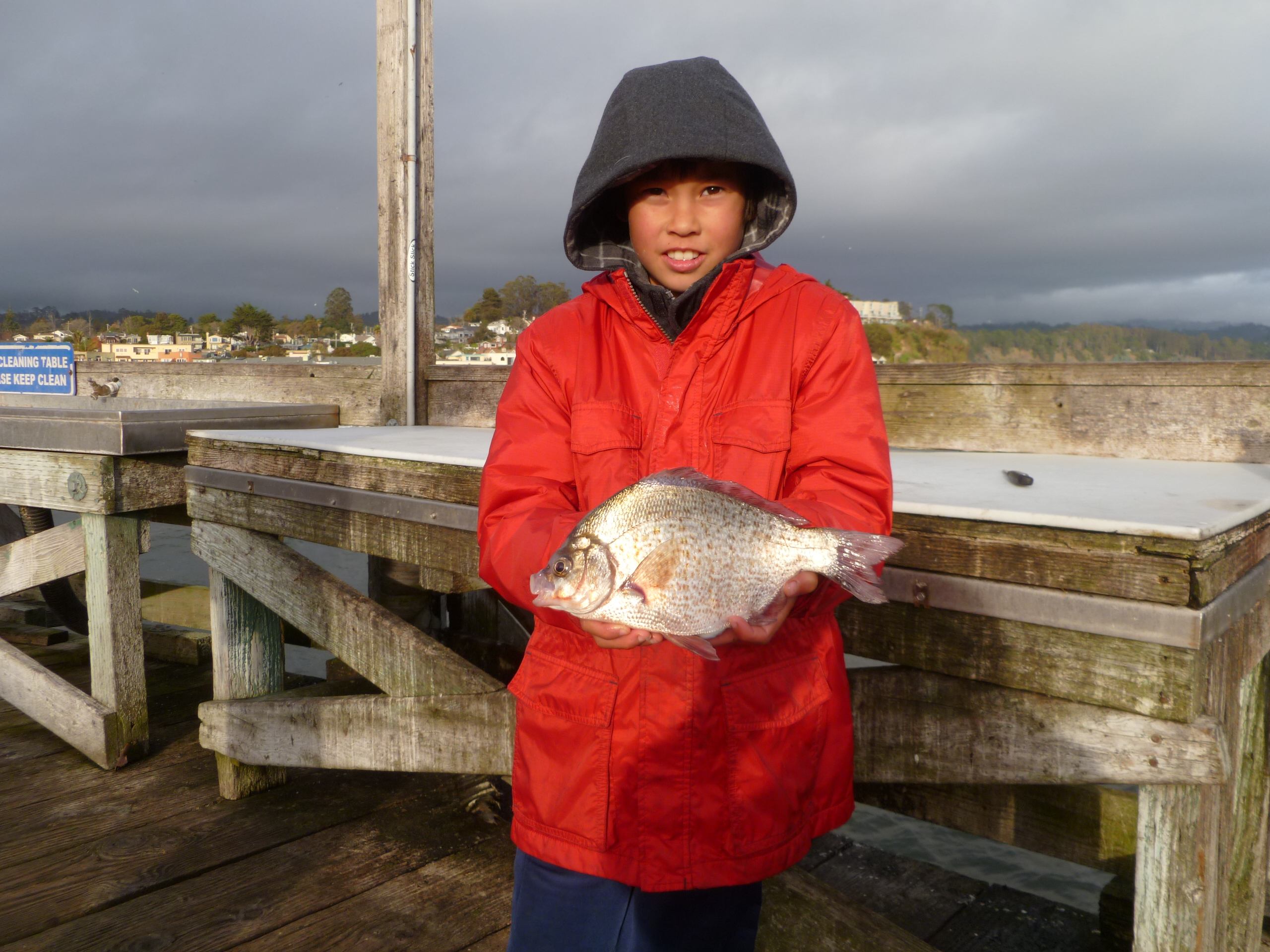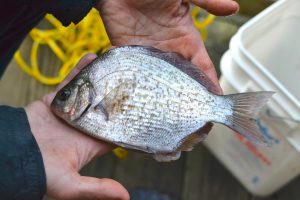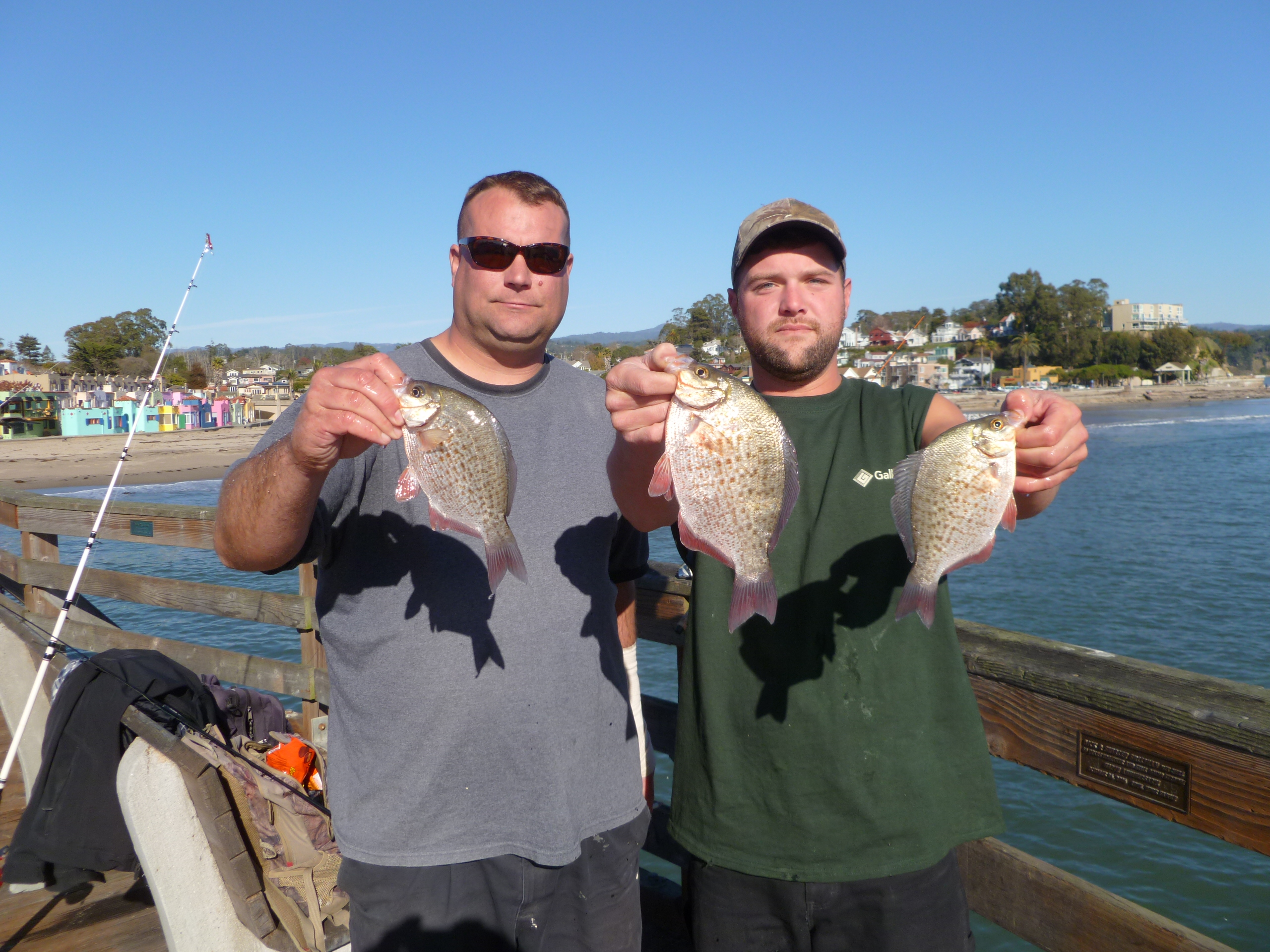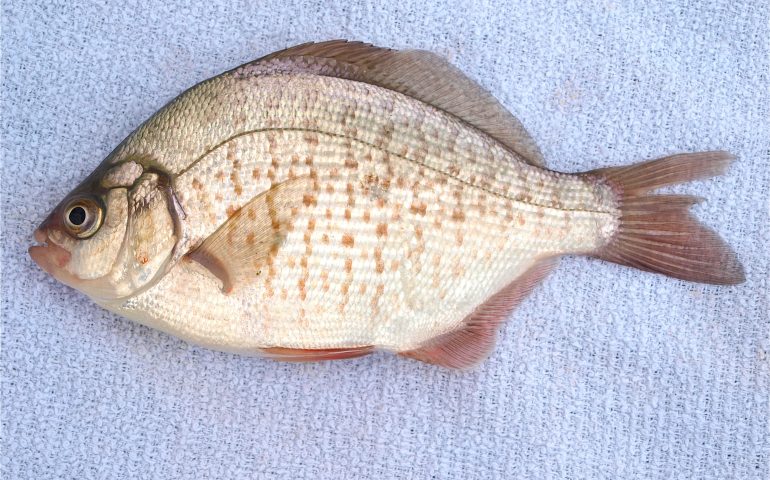Surfperches/Seaperches: Family Embiotocidae
Species: Amphistichus koelzi (Hubbs, 1933); from the Greek words amphi (double) and stoichos (series, referring to the two rows of teeth in each jaw) and Walter Koelz, a U.S. ichthyologist. Family Embiotocidae, subfamily Amphistichinae.
Alternate Names: Surf perch, humpback perch, porgie (or porgee). Called majarra angaripola or perca in Mexico.
Identification: Their coloring is silvery, with olive-green mottling and bars on sides (bars usually broken and disconnected); most fins are reddish colored; caudal fin (tail) pinkish to deep red. Longest dorsal fin spines about equal to or slightly longer than longest dorsal soft-ray; pronounced notch between dorsal fin hard rays and soft rays. Lower edge of eye is below the upper lip. More disc-like shaped than in redtail surfperch.

Size: To 12.8 inches; most caught from piers are 9-11 inches long. The California record fish weighed 2 Lbs. 4 oz. and was taken at Santa Cruz in 2023. The IGFA World Record fish is listed at 2 Lbs 0 oz for a fish taken in Morro Bay in 2006.
Range: Los Ojitos, central Baja California, Arroyo San Isidro, northern Baja California, to Shi Shi Beach, Cape Flattery, Washington. Common from northern Baja California, to about southern Oregon.
Habitat: Typically in surf zone, shallow-water, sandy-shore areas; recorded to a depth of 30 feet.
Piers: Calico surfperch are the number one surf area fish caught on central California piers north of Cayucos. In the Pismo Beach-Cayucos region, large numbers of both barred surfperch and calico surfperch are caught; more barred surfperch are landed but the calico surfperch will be slightly larger in size. Best bets: Avila Pier, Cayucos Pier, San Simeon Pier, Seacliff State Beach Pier, Capitola Wharf, Santa Cruz Wharf, Pacifica Pier and (surprisingly) Point Arena Pier.

Shoreline: One of the main fish for sandy shore anglers in central California anglers.
Boats: An inshore species rarely taken by boaters.
Bait and Tackle: Bait and tackle is the same for all three of the large surfperch. Best bait is live sand crabs followed by live sea worms (pile worms or bloodworms); next would be fresh mussels, shrimp or clams. Tackle should be heavy enough to hold bottom in the surf area, and hooks should be size 6 to size 2 baited on a high/low leader.
Food Value: Mild-flavored flesh with small flakes and a soft texture. The flesh is white colored and low in fat content. Can be cooked in any manner but most commonly fried.
Comments: Calico surfperch will often school right around the inshore pilings; at times, fishing right under the pier, as close to these pilings as possible, will yield the largest fish. Calicos are sometimes mistaken for redtail surfperch.


Never caught this species south of Goleta, kind of noteworthy because they are common from there northward.